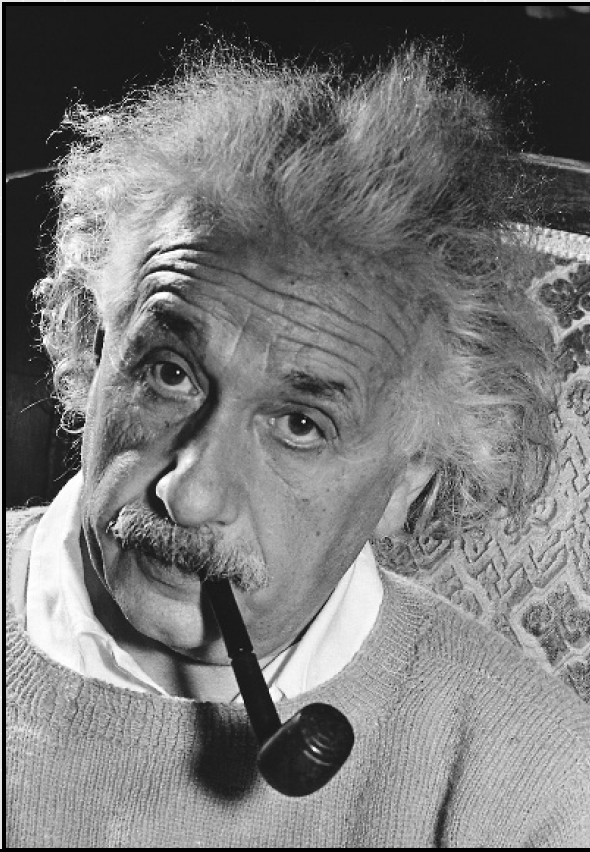


 الفيزياء الكلاسيكية
الفيزياء الكلاسيكية
 الكهربائية والمغناطيسية
الكهربائية والمغناطيسية
 علم البصريات
علم البصريات
 الفيزياء الحديثة
الفيزياء الحديثة
 النظرية النسبية
النظرية النسبية
 الفيزياء النووية
الفيزياء النووية
 فيزياء الحالة الصلبة
فيزياء الحالة الصلبة
 الليزر
الليزر
 علم الفلك
علم الفلك
 المجموعة الشمسية
المجموعة الشمسية
 الطاقة البديلة
الطاقة البديلة
 الفيزياء والعلوم الأخرى
الفيزياء والعلوم الأخرى
 مواضيع عامة في الفيزياء
مواضيع عامة في الفيزياء|
Read More
Date: 13-12-2015
Date: 22-12-2015
Date: 24-1-2017
|
Bendable Space and Gravity Wells
Michell’s and Laplace’s descriptions of dark stars and invisible bodies were at the time completely theoretical. They had absolutely no evidence for these strange celestial bodies, and the vast majority of scientists thought that no such bodies existed. Not surprisingly, therefore, these precursors of black holes became a mere mathematical curiosity. And for more than a century afterward few scientists gave them any thought.
In the early twentieth century, however, the concept of black holes enjoyed an unexpected revival when a brilliant young German scientist named Albert Einstein proposed a new theory of gravity. Part of his general theory of relativity, published in 1915–1916, it did not disprove Newton’s theory and formula for universal gravitation. Rather, Einstein’s version simply explained the nature of space and the way gravity works within it differently than Newton’s had.
For example, according to Newton gravity is a force exerted by objects and therefore emanates somehow from their centers. According to Einstein, however, gravity is not a directed force but a property of space itself, an idea that was revolutionary because it proposed that space actually has an unseen structure. Before Einstein, the common assumption among physicists and other scientists was that space is an empty void with no ability to affect the bodies moving within it. In contrast, Einstein argued that space has an invisible “fabric” with an elastic, or bendable, quality.
Further, Einstein stated, bodies possessing mass move through space and interact with its hidden fabric by sinking into it and creating a depression. Scientists came to call such a well-like depression a “gravity well.” In this view, the depth of a gravity well depends on a body’s mass; obviously, the more massive the body is, the deeper the body will sink and the deeper the well it will create. In this way, said Einstein, very massive objects, like planets and stars, distort or curve space’s elastic fabric, and this curvature is what people experience as gravity. Arny gives this simplified analogy:
Imagine a waterbed on which you have placed a baseball. The baseball makes a small depression in the otherwise flat surface of the bed. If a marble is now placed near the baseball, it will roll along the curved surface into the depression. The bending of its environment made by the baseball therefore creates an “attraction” between the baseball and the marble. Now suppose we replace the baseball with a bowling ball. It will make a bigger depression and the marble will roll in further and be moving faster as it hits the bottom. We therefore infer from the analogy that the strength of the attraction between the bodies depends on the amount by which the surface is curved. Gravity also behaves this way, according to the general theory of relativity. According to that theory, mass creates a curvature of space, and gravitational motion occurs as bodies move along the curvature.
Now replace this analogy with one involving real objects moving through outer space. Consider two planets of differing size approaching each other. The smaller planet encounters the curve of the larger planet’s gravity well and rolls “downhill” toward the larger object. (This produces exactly the same effect as the larger planet “pulling in” the smaller one in Newton’s gravitational model, so Newton’s formula can still be applied and its results for most objects are still valid.) In Einstein’s gravitational model, if the smaller planet is moving fast enough, it will soon roll out of the larger planet’s gravity well and continue on its way. If it is not moving at the proper escape velocity, however, it will be trapped in the well, in which case it will either go into orbit around the larger planet or crash into it.
Einstein: Visionary of Space and Time
No other scientist has contributed more to human understanding of the behavior of light, the curvature of space, and the existence of black holes than physicist Albert Einstein. He was born in Ulm, Germany, in 1879. Soon his father, who manufactured electronic goods, moved the family to Munich, and later to Milan, Italy. As a young man, Albert studied in Switzerland and in 1900 graduated from Zurich Polytechnic Institute.
In 1905 he published three ground-breaking scientific papers, one on the nature of light, another on the mechanics of atom-sized molecules, and a third stating most of the principles that came to be known as his special theory of relativity. Perhaps the most famous component of the theory of special relativity is that mass and energy are equivalent. In 1915 Einstein published his visionary general theory of relativity, in which he showed that gravity is a function of four-dimensional space and time and that space is curved. Among the equations for general relativity were some that predicted the existence of black holes.
Einstein received the Nobel Prize in physics in 1921 and died in 1955. Throughout the twentieth century, one scientific experiment and discovery after another verified his predictions with amazing accuracy, including the discovery of black holes. Today he is regarded as one of the greatest scientists in history.

Physicist Albert Einstein’s ideas about matter, energy, and time proved revolutionary.



|
|
|
|
علامات بسيطة في جسدك قد تنذر بمرض "قاتل"
|
|
|
|
|
|
|
أول صور ثلاثية الأبعاد للغدة الزعترية البشرية
|
|
|
|
|
|
|
مكتبة أمّ البنين النسويّة تصدر العدد 212 من مجلّة رياض الزهراء (عليها السلام)
|
|
|